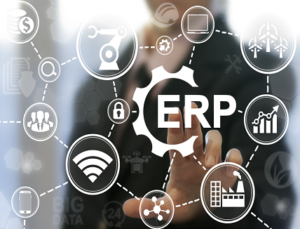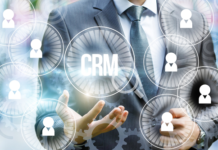
During the first couple of years for most startups and small businesses, the founder or upper leadership can keep track of most of the core business processes. As the business and staff size grows, the processes become more and more challenging to monitor and manage. You start facing the problems like business silos interfering with continued growth.
Businesses attack these growth problems in several ways, but one of the more common approaches is enterprise resource planning. Not familiar with the details of ERP for businesses? Keep reading for our guide to ERP and its potential benefits for your business.
What Is ERP?
Your business relies on a number of semi-discrete areas of operation to function properly. Some of the more common areas include:
- Production
- Supply Chains
- Finance
- Human Resources
- Marketing
- Sales
While each of these areas answers to the same master, they routinely run their internal responsibilities using methods or software that don’t integrate well with other departments. This creates the conditions for information silos and the inevitable bottlenecks such silos create.
For example, let’s say that your warehouse runs an inventory control system that your sales department can’t access in real-time. Instead, the warehouse sends an updated list of what’s in stock at the end of each day. That means your sales team is always working from outdated information.
This can leave you vulnerable if a rush of orders for a single product comes in on one day. Your sales team doesn’t know that it’s making delivery promises you can’t actually meet.
Enterprise resource planning is a set of methods and technologies that help businesses overcome or outright avoid these kinds of silos and bottlenecks.
Centralizing Information
Probably the single greatest strength of ERP systems is that they centralize information. That means that, even if a department wants to keep information private, the systems they work in make it very difficult.
So, let’s say your marketing team runs a new campaign. Boosting sales is the goal of most marketing campaigns. The only way the marketing department can really see if their campaign is working is if they can see recent sales numbers.
The sales department might want to keep its recent numbers private because. They can see an uptick in sales as a way to negotiate for a better budget next year.
What if those numbers are available to everyone, though? Marketing can point to the uptick in sales as evidence of an effective campaign.
Centralizing information also streamlines operations like job planning. If you see an unexpected burst of orders, the system can help organize the production workflow and alert the production team that they’ll need extra manpower for a few weeks. You can learn more about the benefits of job scheduling with this resource.
ERP Systems
While you can always find industry-specific versions of most solutions like a Microsoft Dynamics partner, all ERP systems work off a fairly standard model. You get an ERP software package that includes modules or department-specific areas.
The modules include area-specific tools. For example, marketing might get digital marketing automation features. Finance will get tools for tracking accounts receivable.
There are typically access-control options associated with these department-specific features. That is because no one outside the department needs access to them.
Information that has applications outside of the department, however, becomes available through a central database. Since sales figures matter for everything from procurement and marketing to scheduling, those kinds of numbers go into the database for common use.
These systems also provide an overall dashboard for upper management. The dashboard provides information on key performance indicators from across the business.
These dashboards typically allow for some level of customization, as well. That lets you select and monitor metrics that specifically matter for your business.
For example, let’s say your company has a major e-commerce revenue stream. You might want more e-commerce data displayed than a competitor with a minor e-commerce presence.
Types of ERP Solutions
ERP solutions fall into three broad categories: on-site, cloud-based, and hybrid systems.
On-site systems go on your local hardware, but they can come with high licensing fees if you operate in multiple locations. Updates or support can also prove slow or disruptive.
Cloud-based systems often offer much more affordable subscription options. The vendor manages all of the updates which appear automatically on your end. You can typically resolve most issues via remote support since none of the software is actually on-site.
Hybrid systems host parts of the system in the cloud and parts of the system locally. Some businesses prefer this option due to legacy software they must keep and integrate with their ERP systems. Hybrid systems provide you a more flexible solution, but you may face à la carte licensing fees for any on-site modules.
ERP Benefits
ERP solutions provide a number of key benefits. ERP helps you identify problem workflows and implement more efficient ones.
You get more and more accurate data sharing, which allows for more precise and useful analytics and business intelligence. Centralized information also supports better customer support, since everyone who needs it can access customer information. It also prevents overpromising or late deliveries by providing real-time inventory information.
Better finance monitoring tools often boost your cash flow by ensuring timely invoicing and payment reminders. Most ERP systems also provide automation tools that can manage certain mundane tasks. That allows your employees to focus on higher-order problems and solutions.
Enterprise Resource Planning and Your Business
Enterprise resource planning can offer a business many benefits, but is it right for your business? The answer to that question depends on a few key factors.
Has your business gotten large enough that information silos exist or do you see them forming? Is monitoring all the information about operations becoming a full-time job all by itself? Are you growing at a pace where these things will become inevitable?
If you answered yes to any of those questions, you can likely use an ERP system.
Looking for more software tips? Check out the posts in our Tech Focus section.


















